This article brings you what is JVM in Java? A brief introduction to the Java virtual machine to let everyone understand what the JVM can do and the role of the JVM. It has certain reference value. Friends in need can refer to it. I hope it will be helpful to you.

What is JVM?
The Java Virtual Machine (JVM) is a virtual machine that runs Java bytecode, which is the core of the Java programming language. When we run a program, the JVM is responsible for converting the byte code into machine-specific code. JVM is also platform dependent and provides core Java functions such as memory management, garbage collection, security, etc.
JVM is called virtual because the interface it provides does not depend on the underlying operating system and machine hardware. This independence from hardware and operating system allows Java programs to be written once anywhere.
In the real world, JVM is a specification that provides a runtime environment that can execute Java bytecode.
What can the JVM do?
JVM performs the following operations:
1. Loading code
2. Verification code
3. Execute code
3. Provide runtime environment
JVM provides the following definitions:
1.Memory area
2. Class file format
3. Registration set
4. Garbage collection heap
5. Fatal error report, etc.
JVM Architecture
Let us take a look at the internal architecture of the JVM. It contains class loaders, memory areas, execution engines, etc.

1. Class loader
Classloader is a subsystem of the JVM, used to load class files. Whenever we run a java program, it is first loaded by the class loader. There are three built-in class loaders in Java.
1), Bootstrap ClassLoader: This is the first class extension, which is the super class of the Extension class loader. It loads the rt.jar file, which contains all the class files of Java Standard Edition, such as java.lang package class, java.net package class, java.util package class, java.io package class, java.sql package class, etc.
2), Extension ClassLoader: This is the subclass loader of Bootstrap and the parent class loader of the System class loader. It goes through the jar files located in the $JAVA_HOME/jre/lib/ext directory.
3), System/Application ClassLoader: This is a subclass loader of the Extension class loader. It loads class files from the classpath. By default, classpath is set to the current directory. You can change the classpath using the "-cp" or "-classpath" switch. It is also known as Application class loader.
2. Class (method) area
Method area stores each type of structure, such as runtime constant pool, field and method data, and method code.
3. Heap
Heap is the runtime data area where objects are allocated.
4. Stacking
Java stacks storage frames. Stack contains local variables and partial results, and plays a role in method calls and returns.
Each thread has a private JVM stack, which is created at the same time as the thread.
A new frame is created each time the method is called. When the method call completes, the frame will be destroyed.
5. Program Counter Register
PC (Program Counter) register contains the address of the Java virtual machine instruction currently being executed.6. Native Method Stack(Native Method Stack)
It contains all native methods used in the application.7. Execution Engine(Execution Engine)
It includes:1), virtual processor2), Interpreter: reads the bytecode stream and executes the instructions. 3), just-in-time (JIT) compiler: used to improve performance. JIT simultaneously compiles parts of the byte code with similar functionality, thus reducing the time required for compilation. Here, the term "compiler" refers to the converter from the instruction set of the Java Virtual Machine (JVM) to the instruction set of a specific CPU.8. Java Native Interface(Java Native Interface)
Java Native Interface (JNI) is a framework that provides an interface for communicating with another Communicate with another application written in a language like C, C++, Assembly, etc. Java uses the JNI framework to send output to the console or interact with OS libraries.Summary: The above is the entire content of this article, I hope it will be helpful to everyone's study. For more related video tutorials, please visit: JavaTutorial!
The above is the detailed content of What is a java virtual machine? A brief introduction to JVM. For more information, please follow other related articles on the PHP Chinese website!
 一个分布式 JVM 监控工具,非常实用!Aug 15, 2023 pm 05:15 PM
一个分布式 JVM 监控工具,非常实用!Aug 15, 2023 pm 05:15 PM该项目为了方便开发者更快监控多个远程主机jvm,如果你的项目是Spring boot那么很方便集成,jar包引入即可,不是Spring boot也不用气馁,你可以快速自行初始化一个Spirng boot程序引入jar包即可
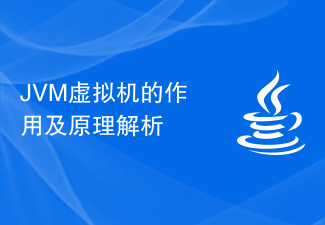 JVM虚拟机的作用及原理解析Feb 22, 2024 pm 01:54 PM
JVM虚拟机的作用及原理解析Feb 22, 2024 pm 01:54 PMJVM虚拟机的作用及原理解析简介:JVM(JavaVirtualMachine)虚拟机是Java编程语言的核心组成部分之一,它是Java的最大卖点之一。JVM的作用是将Java源代码编译成字节码,并负责执行这些字节码。本文将介绍JVM的作用及其工作原理,并提供一些代码示例以帮助读者更好地理解。作用:JVM的主要作用是解决了不同平台上Java程序的可移
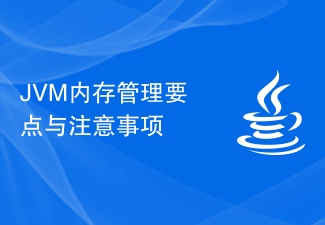 JVM内存管理要点与注意事项Feb 20, 2024 am 10:26 AM
JVM内存管理要点与注意事项Feb 20, 2024 am 10:26 AM掌握JVM内存使用情况的要点与注意事项JVM(JavaVirtualMachine)是Java应用程序运行的环境,其中最为重要的就是JVM的内存管理。合理地管理JVM内存不仅可以提高应用程序的性能,还可以避免内存泄漏和内存溢出等问题。本文将介绍JVM内存使用的要点和注意事项,并提供一些具体的代码示例。JVM内存分区JVM内存主要分为以下几个区域:堆(He
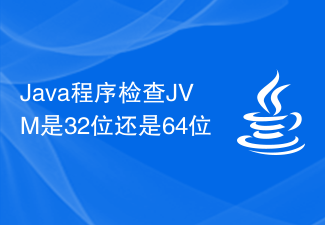 Java程序检查JVM是32位还是64位Sep 05, 2023 pm 06:37 PM
Java程序检查JVM是32位还是64位Sep 05, 2023 pm 06:37 PM在编写java程序来检查JVM是32位还是64位之前,我们先讨论一下JVM。JVM是java虚拟机,负责执行字节码。它是Java运行时环境(JRE)的一部分。我们都知道java是平台无关的,但是JVM是平台相关的。我们需要为每个操作系统提供单独的JVM。如果我们有任何java源代码的字节码,由于JVM,我们可以轻松地在任何平台上运行它。java文件执行的整个过程如下-首先,我们保存扩展名为.java的java源代码,编译器将其转换为扩展名为.class的字节码。这发生在编译时。现在,在运行时,J
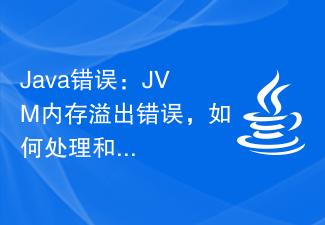 Java错误:JVM内存溢出错误,如何处理和避免Jun 24, 2023 pm 02:19 PM
Java错误:JVM内存溢出错误,如何处理和避免Jun 24, 2023 pm 02:19 PMJava是一种流行的编程语言,在开发Java应用程序的过程中,可能会遇到JVM内存溢出错误。这种错误通常会导致应用程序崩溃,影响用户体验。本文将探讨JVM内存溢出错误的原因和如何处理和避免这种错误。JVM内存溢出错误是什么?Java虚拟机(JVM)是Java应用程序的运行环境。在JVM中,内存被分为多个区域,其中包括堆、方法区、栈等。堆是用于存储创建的对象的
 如何有效地调整JVM堆内存大小?Feb 18, 2024 pm 01:39 PM
如何有效地调整JVM堆内存大小?Feb 18, 2024 pm 01:39 PMJVM内存参数设置:如何合理调整堆内存大小?在Java应用程序中,JVM是负责管理内存的关键组件。其中,堆内存是用于存储对象实例的地方,堆内存的大小设置对应用程序的性能和稳定性有着重要影响。本文将介绍如何合理调整堆内存大小的方法,并附带具体代码示例。首先,我们需要了解一些关于JVM内存的基础知识。JVM的内存分成了几个区域,包括堆内存、栈内存、方法区等。其中
 Linux下Tomcat8怎么修改JVM内存配置Jun 03, 2023 am 08:43 AM
Linux下Tomcat8怎么修改JVM内存配置Jun 03, 2023 am 08:43 AMTomcat8如何修改JVM内存配置Tomcat并不建议直接在catalina.sh里配置变量,而是写在与catalina同级目录(bin目录)下的setenv.sh里。所以如果我们想要修改jvm的内存配置那么我们就需要修改setenv.sh文件(默认没有,需新建一个setenv.sh),写入(大小根据自己情况修改):exportCATALINA_OPTS="$CATALINA_OPTS-Xms1000m"exportCATALINA_OPTS="$CATALINA
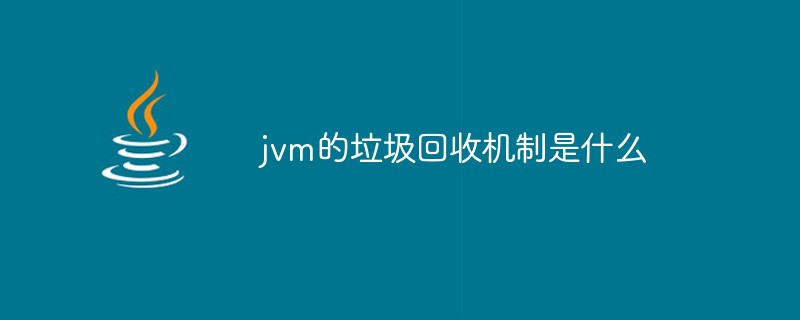 jvm的垃圾回收机制是什么Feb 01, 2023 pm 02:02 PM
jvm的垃圾回收机制是什么Feb 01, 2023 pm 02:02 PMjvm的垃圾回收机制是GC(Garbage Collection),也叫垃圾收集器。GC基本原理:将内存中不再被使用的对象进行回收;GC中用于回收的方法称为收集器,由于GC需要消耗一些资源和时间,Java在对对象的生命周期特征进行分析后,按照新生代、老年代的方式来对对象进行收集,以尽可能的缩短GC对应用造成的暂停。


Hot AI Tools

Undresser.AI Undress
AI-powered app for creating realistic nude photos

AI Clothes Remover
Online AI tool for removing clothes from photos.

Undress AI Tool
Undress images for free

Clothoff.io
AI clothes remover

AI Hentai Generator
Generate AI Hentai for free.

Hot Article

Hot Tools

MantisBT
Mantis is an easy-to-deploy web-based defect tracking tool designed to aid in product defect tracking. It requires PHP, MySQL and a web server. Check out our demo and hosting services.

mPDF
mPDF is a PHP library that can generate PDF files from UTF-8 encoded HTML. The original author, Ian Back, wrote mPDF to output PDF files "on the fly" from his website and handle different languages. It is slower than original scripts like HTML2FPDF and produces larger files when using Unicode fonts, but supports CSS styles etc. and has a lot of enhancements. Supports almost all languages, including RTL (Arabic and Hebrew) and CJK (Chinese, Japanese and Korean). Supports nested block-level elements (such as P, DIV),

Zend Studio 13.0.1
Powerful PHP integrated development environment

Dreamweaver CS6
Visual web development tools

Safe Exam Browser
Safe Exam Browser is a secure browser environment for taking online exams securely. This software turns any computer into a secure workstation. It controls access to any utility and prevents students from using unauthorized resources.






